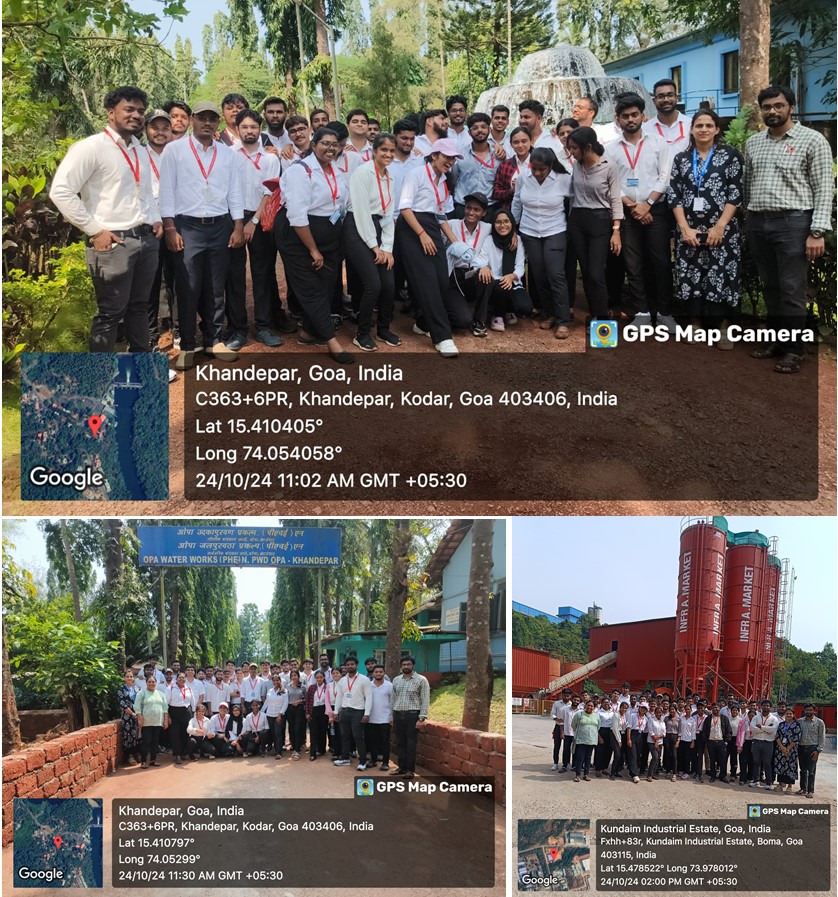TE Civil Students Visit RMC Plant of Infra Market, Kundaim and OPA Water Treatment Plant, Khandepar

On October 24, 2024, Third Year Civil Engineering students from Don Bosco College of Engineering visited the Ready-Mix Concrete (RMC) plant of Infra Market in Kundaim. The visit began with a warm welcome from Mr. Kishan Mangueskar, Head Manager at Infra Market, who provided an overview of the company as a comprehensive solution for construction material needs. He highlighted Infra Market’s rapid growth as a supplier of RMC, noting that it operates in 13 states across India and has over 90 plants, including three in Goa.
During the tour of the plant, the students observed the layout, which featured a silo for 120 tons of cement and separate silos for Ground Granulated Blast Furnace Slag (GGBS), along with aggregate bins. They learned about the batching process, where raw materials are measured and mixed to produce concrete, which is subsequently loaded into transit mixers for delivery. Mr. Mangueskar detailed various quality tests conducted on-site, including specific gravity tests, pH testing, and sieve analysis of aggregates. The students were also introduced to special concrete mixes such as Spine Mix, Self Mix, and Fibre Mix, and they learned about the curing processes employed at the plant. The visit concluded with a tour of the in-house Quality Control Laboratory, emphasizing the stringent measures in place to ensure concrete quality and consistency.
Later that day, the students visited the OPA Water Treatment Plant in Khandepar, Ponda. Commissioned in 1967, this facility supplies water to Shiroda, Ponda, and Tiswadi, with the Opa weir constructed in 1972 to manage water levels during dry periods. The staff welcomed the students and explained the continuous pumping process from the Khandepar River, highlighting the use of backup pumps during technical difficulties.
The tour covered the treatment process, beginning with aeration, followed by settling tanks where alum and lime are added based on the water’s pH level. The students learned how impurities are removed, and how the tank is drained and backflushed. The water then passes through three filter media—gravel, coarse sand, and fine sand—with reverse blow cleaning. After treatment, the water is sent to a clear water reservoir, where chlorination occurs to eliminate bacteria. The students observed various testing apparatus used throughout the process, which includes testing samples for pH and turbidity at three different stages. Finally, the treated water is distributed using gravity. This visit provided valuable insights into the operations of a crucial facility that ensures access to safe drinking water, enriching the students’ understanding of water treatment processes.













 Visit Today : 969
Visit Today : 969